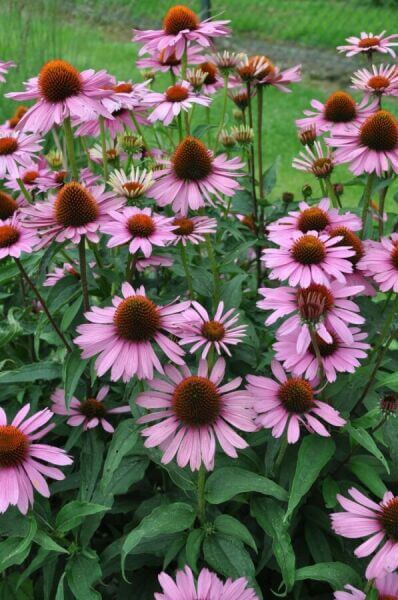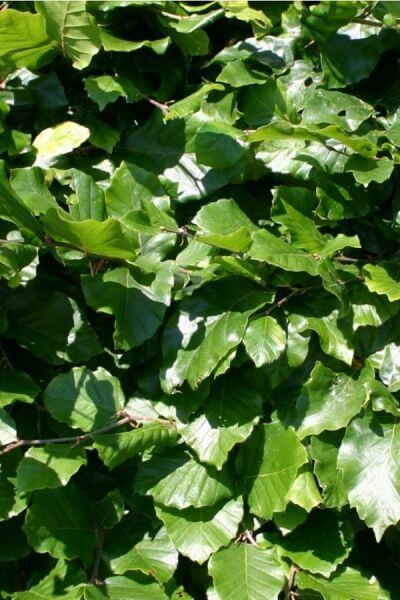Hedge Plants For Decorative Landscaping
Boost your garden's appeal with lush hedge varieties such as Yew (Taxus), Thuja, Laurel, Photinia, and Bamboo, celebrated for their structural integrity and environmental advantages.
Yew and Thuja provide evergreen coverage and winter strength, while Laurel provides quick growth and broad, fragrant leaves.
Photinia includes seasonal charm with its dynamic red foliage, and Bamboo provides a low-maintenance, serene atmosphere.
These hedges enhance air quality, reduce noise, and develop tranquil, personal spaces.
Correct planting, spacing, and maintenance ensure energetic growth and environmental consistency.
Explore how these lush varieties can raise your garden's appeal and well-being.
Secret Takeaways
Change Your Garden With Lush Hedge Ranges
- Select Yew for its dense, evergreen development and exceptional durability.
- Go with Laurel for its quick growth and broad leaves, ensuring quick privacy.
- Choose Photinia for its vibrant seasonal foliage, which turns a striking dark red.
- Make use of Bamboo for a low-maintenance, winter-hardy hedge with aesthetic appeal.
- Space plants 2-3 per meter and prune routinely for ideal growth and health.
Popular Hedge Plants
When changing a garden with lavish hedge ranges, it's necessary to think about popular hedge plants such as Yew, Thuja, Laurel, and Photinia due to their special characteristics and advantages.
Yew (Taxus) is extremely esteemed for its longevity and thick, green growth, making it a prime choice for withstanding landscapes.
Thuja is noted for its evergreen foliage and robust winter durability.
Photinia adds seasonal vibrancy with red leaves that darken gradually, producing dynamic visual appeal.
Laurel offers rapid development and fragrant, broad leaves, suitable for quick personal privacy.
Additionally, Bamboo is an outstanding choice for atmosphere, using a low-maintenance, winter-hardy choice that improves the garden's aesthetic with its sophisticated, swaying walking sticks.
These choices deal with a range of horticultural requirements and preferences.
Advantages of Garden Hedges
Garden hedges provide a wide variety of benefits, making them an important addition to any landscape. These natural barriers are cost-effective to execute and supply substantial wind protection, improving air circulation and contributing to sound reduction. The thick foliage of hedges like Thuja and Beech ensures personal privacy by blocking exposure, developing a remote and serene environment.
Hedges likewise play an important function in microclimate regulation, offering a steady environment that fosters plant development and decreases temperature changes. Their detailed leaf structures filter pollutants, improving air quality and contributing to a healthier garden environment.
Additionally, hedges stand out in sound reduction, absorbing and deflecting sound waves to lower ambient noise levels. This double functionality of offering both acoustic and visual privacy enhances the general harmony and visual appeal of any garden.
Planting and Upkeep Tips
For a successful hedge, meticulous preparation of the planting area is essential. Guarantee the soil has appropriate pH and drain to support strong root development.
Space the plants appropriately for the chosen species. Water the hedge often during its initial growth phase, changing as required with seasonal modifications.
Carry out a organized bug control and illness avoidance technique, using chemical or natural treatments when essential. Frequently check for aphids, termites, and fungal infections.
Apply mulch to keep moisture and suppress weeds. Seasonal pruning promotes thick development and air flow, important for plant health.
Following these guidelines will help you cultivate a dynamic, well-kept hedge that improves the charm of your garden.
Spacing and Trimming Standards
Spacing and Cutting Guidelines
Proper spacing and cutting are important for cultivating healthy, visually appealing hedges. Adequate spacing makes sure each plant gets adequate nutrients, light, and airflow.
Follow these guidelines for optimum hedge upkeep:
- Spacing: Position hedge plants 2-3 plants per meter to encourage robust development.
- Pruning Methods: Routine pruning is vital for maintaining wanted hedge height and shape. Trim brand-new development in summertime and cut back older wood throughout winter.
- Seasonal Care: Change trimming techniques and schedules according to seasonal requirements to ensure plant health.
- Hedge Height: Routinely monitor and cut to preserve the wanted hedge height and accomplish consistent aesthetic appeals.
Adhering to these actions will ensure your hedge prospers, enhancing both the appeal and performance of your garden.
Picking the Right Hedge
Picking the Right Hedge
Selecting the proper hedge includes assessing elements such as fully grown height, foliage density, and environmental durability. Effective hedge plant choice needs understanding each types' development qualities and site-specific flexibility.
For instance, Yew (Taxus) offers outstanding durability and dense development, while Thuja is notable for its winter durability. In addition, thinking about maintenance requirements is essential; fast-growing types like Laurel or Privet demand routine cutting, whereas low-maintenance alternatives like Bamboo or Ivy may be preferable for those seeking minimal upkeep.
Ecological elements such as soil type, light schedule, and wetness conditions should also guide the selection process. This cautious method guarantees the picked hedges will prosper, supplying both visual and functional benefits to the garden landscape.
Delivery and Planting Guidance
To ensure your hedge plants flourish, they ought to be delivered by specialized carriers and planted without delay upon arrival.
Follow these necessary actions for effective planting:
- Soil Preparation: Enrich the soil with organic matter to improve drain and nutrient material.
- Planting Depth: Produce a trench twice the width and equivalent to the depth of the root ball.
- Watering Methods: Water completely after planting, keeping the soil consistently moist but not saturated.
- Mulching: Use a layer of mulch to maintain moisture and suppress weeds.
Consumer Assistance and Service
Given the crucial function of prompt assistance in horticultural pursuits, our customer assistance group is available six days a week through telephone, e-mail, and social networks to use skilled recommendations and quickly address any issues. Their dedication to quick response times guarantees customer satisfaction by solving inquiries related to plant health, ideal planting methods, and upkeep schedules.

Availability
-------------------
Within 24 hours
This thorough support group, enhanced by an excellent 9.3/ 10 customer ranking, highlights our commitment to boosting the gardening experience for every client.
Regularly Asked Questions
The Length Of Time Does It Take for Hedge Plants to Develop?
Hedge plants generally require one to 3 years to become completely developed, with the precise period differing by species and growing conditions.
Efficient care throughout this crucial duration is necessary for robust growth. Constant watering, vigilant weed control, and suitable fertilizer application are essential in promoting strong root development.
For example, fast-growing types like Laurel might establish more quickly, while slower-growing ranges such as Yew may take longer. Thorough maintenance accelerates the facility procedure, leading to dense and healthy hedges.
What Are the very best Hedge Plants for Personal Privacy?
The concern of the very best hedge plants for privacy involves assessing evergreen and deciduous choices.
Evergreen hedges like Thuja, Laurel, and Cypress supply year-round protection, making sure continuous privacy.
In contrast, deciduous hedges such as Beech provide seasonal privacy, shedding leaves in chillier months.
Key maintenance suggestions for personal privacy hedges consist of regular trimming, fertilizing in spring, and appropriate spacing-- usually 2 to 3 plants per meter.
In addition, consistent watering and thorough weed removal are crucial for promoting healthy, dense growth.
Can Hedge Plants Attract Wildlife to My Garden?
Yes, hedge plants can attract wildlife to your garden by providing essential benefits like shelter, food, and nesting sites, thereby enhancing regional biodiversity. For example, yew, holly, and laurel are exceptional for bring in birds, while ivy supports a range of bugs.
Nevertheless, it is necessary to note that there are some drawbacks, such as increased upkeep to handle insects and regular upkeep. Thoroughly picking and preserving hedge varieties can assist stabilize these downsides and advantages, ultimately cultivating a dynamic and sustainable environment in your garden.
Exist Any Flowering Hedge Plants Available?
Yes, there are flowering hedge plants readily available that can improve the beauty of your garden.
For instance, Elaeagnus, also known as Olive Willow, produces aromatic white flowers in the fall, adding a touch of sophistication.
Photinia, another popular option, showcases vibrant red leaves that develop into a rich green, developing a dynamic visual result throughout the seasons.
To guarantee these plants grow, it's vital to practice proper pruning methods and seasonal maintenance, such as cutting new growth in the summer season and cutting back in the winter season.
These measures will assist maintain the health and visual appeal of your blooming hedges.
How Do I Prevent Bugs in My Hedge Plants?
To prevent insects in hedge plants, use natural insect control methods and preserve correct hedge care. Introduce advantageous pests like ladybugs, which prey on hazardous bugs, to create a balanced environment.
Regularly examine your hedges for indications of problem and without delay remove any affected parts to avoid the spread. Make sure the health of your hedges by using balanced fertilizers and offering sufficient water.
Make use of mulching to retain soil moisture and appropriate spacing to minimize plant tension and promote robust growth. These practices collectively help in decreasing bug issues and maintaining a healthy hedge.
Conclusion
In essence, selecting the best hedge ranges such as Yew, Thuja, and Laurel can change any website garden into a serene haven. These plants supply year-round plant, boost visual appeal, and deal useful advantages like sound decrease and wind defense.
Appropriate planting methods, accurate spacing, consistent watering, and seasonal trimming are crucial for optimum development.
Reliable delivery services and expert consumer assistance make sure a smooth experience from purchase to planting, making it easier than ever to elevate your outdoor space.
Garden hedges offer a wide range of benefits, making them a valuable addition to any landscape. These natural barriers are cost-effective to carry out and supply substantial wind security, improving air circulation and contributing to noise decrease. The thick foliage of hedges like Thuja and Beech guarantees privacy by obstructing visibility, creating a serene and remote environment.

Pruning Strategies: Routine pruning is vital for preserving desired hedge height and shape. Cut brand-new development in summertime and cut back older wood during winter season.